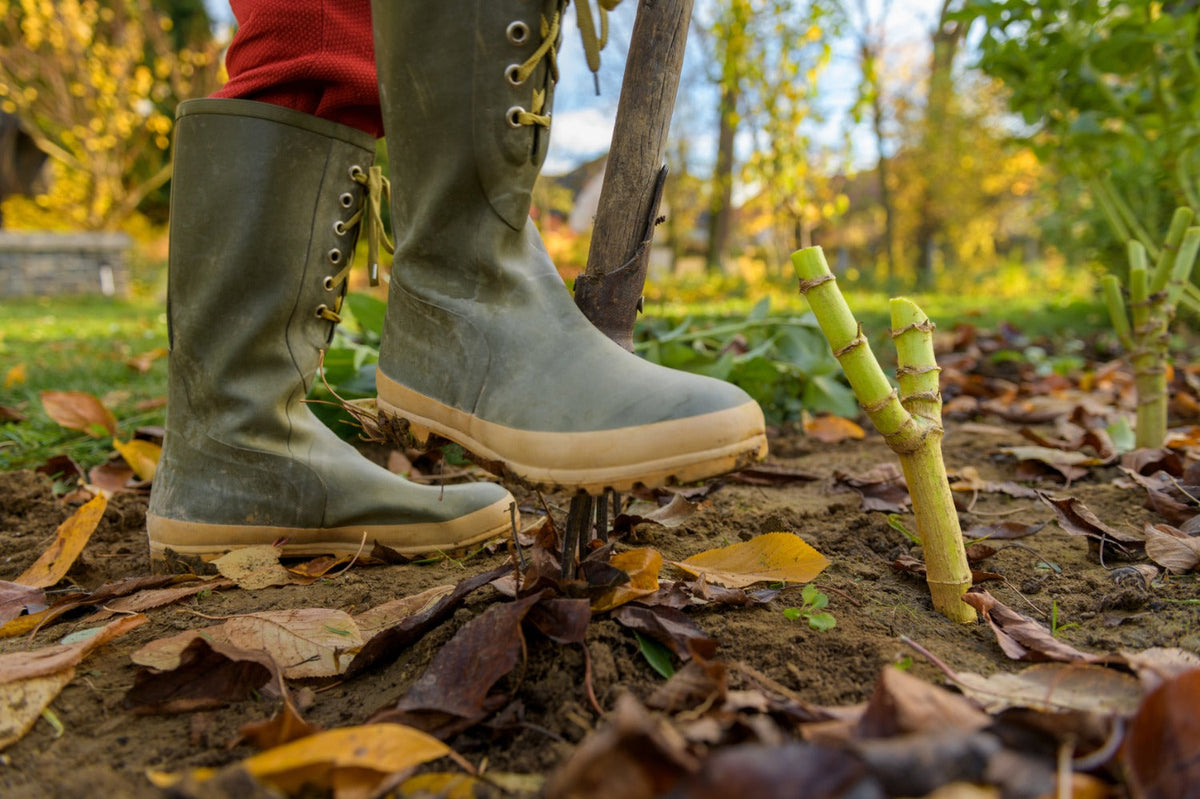
Garden chores for November: harvesting dahlia tubers
|
Tijd nodig om dit artikel te lezen: 3 min
|
Tijd nodig om dit artikel te lezen: 3 min
It's November again. Autumn has arrived and outside it's getting wetter, colder and a bit greyer. Time to retreat indoors and enjoy cosy evenings under a blanket. Although the garden isn't over yet in November . We're going to dig up dahlia tubers and some things can already be pre-sown. Below you can read our tips.
The end of the dahlia craze is in sight. Too bad, because it was so much fun. There are worse addictions than this, but it's still a bit of a withdrawal every time in November, when they stop. When exactly they call it a day is in the hands of Mother Nature. At the first night frost they collapse and become completely brown and runny. So one degree below zero is enough to end the dahlia season. Due to the change in our climate, this is now between the beginning and the end of November. Even the beginning of December is not unusual. You can do 2 things. Either you leave the tubers for the winter, or you dig them up and keep them frost-free until March or April. Digging them up is a big job if you have a lot of plants, but the chance that they will survive the winter is somewhat greater in this case. You can leave them, but only in soil types that drain the water well. Putting a layer of straw over the tubers increases the chances of success. Wet clay soils, where water remains stagnant during the winter, almost always result in rotten tubers that become moldy and wither away. You dig them up by first cutting the stems of the plant in November and then using a spade or rake to lift the tuber out of the ground. We don't like to use a spade, because it can cut the tuber into pieces if you're not careful. Rinse with a little water, let it dry for a week and wrap it in newspaper and then stack it in a cardboard box.
Check your dahlia tubers occasionally over the next few months. If you inspect your tubers monthly, you can quickly intervene when you spot rotten tubers. If so, cut away the rotten ones. Moldy tubers are also common during the winter months. The reason? There is not enough air circulation . The sooner you intervene, the greater the chance that your tubers will survive the winter.
Grass in the garden? Don't leave fallen leaves lying around in a pile in November. They suffocate your lawn and can cause yellowing. Instead, collect the leaves and throw them in the border, where they serve as mulch for plants.
From November onwards it becomes clear why evergreen plants are so important in your garden. They continue to provide colour and structure to the whole. Check which plants you can still add, they are now for sale everywhere.
If you want an amaryllis in bloom at Christmas, it is advisable to plant the bulbs from the beginning to mid-November and place them indoors in a warm place. Water them occasionally and wait patiently.
We shouted it out in October, but we are happy to repeat the following in November: plant pots and flower boxes with evergreen plants and for example pansies, heather or Skimmia . Color makes a world of difference during the darkest months.
Hedgehogs do not hibernate in the ground, but make themselves comfortable under a pile of branches and fallen leaves. Do not tidy up your garden in November, but leave everything there. The wildlife will thank you.
Although there are plenty of berries and seeds in the fall, and certainly in November, that birds need to go into the winter well, it is important to provide some extra food. Always provide fresh water , especially when it freezes.
Did you know that we also have a well-stocked YouTube channel? With over 450 videos, we have a large database of information. Be sure to check out YouTube and subscribe, so you can stay up to date with the latest videos.
In this video Angelo shows you that winning seeds from flowers is not difficult. And that, as long as it is not freezing, it is still possible in November .
In November it is not unusual to sow broad beans outdoors. That way they can be harvested extra early next year. We also sow mizuna and rocket in the greenhouse, in the place where the tomatoes were. Just like in October, you can still plant garlic in November. 1 clove every 10 centimetres and about 10 centimetres deep. 10/10, a mnemonic that can help you on your way. Did you know that you can also plant garlic cloves in a pot to let them grow shoots indoors? You cut off those shoots and use them as a flavouring in dishes.

